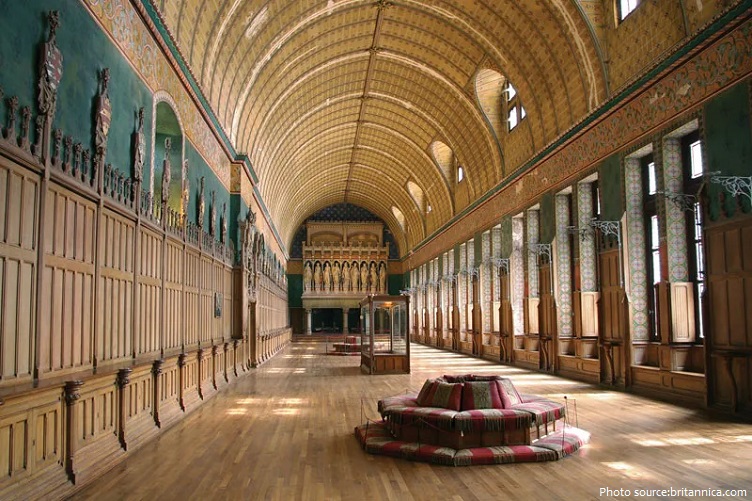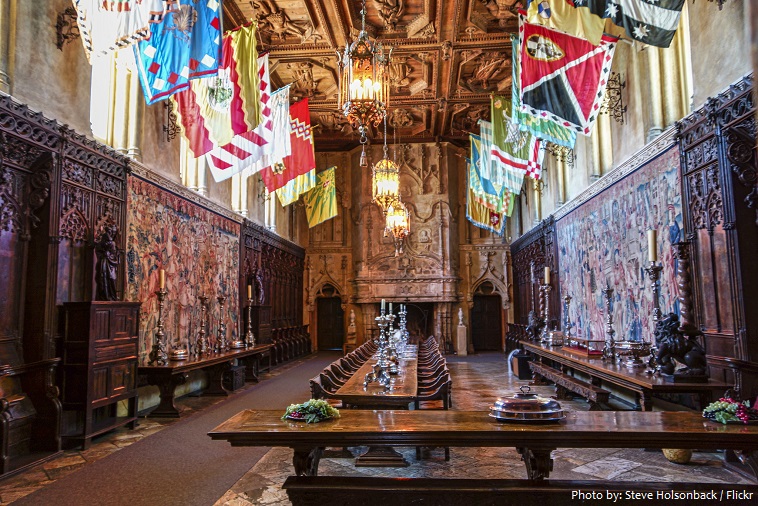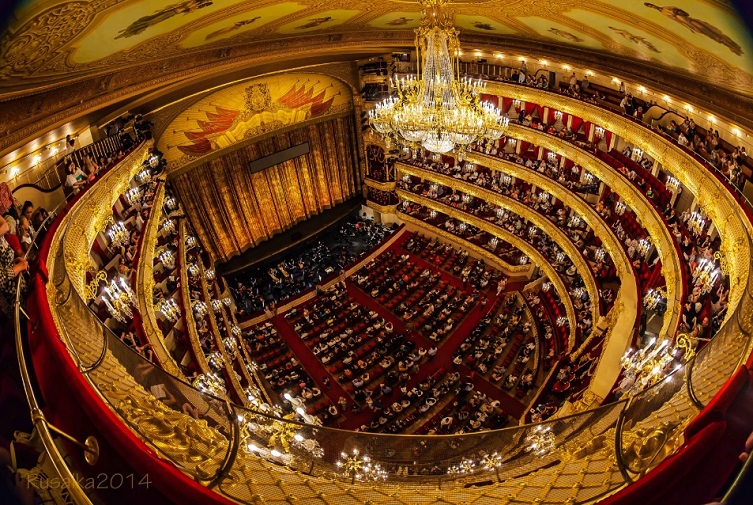
In architecture, a hall is a relatively large space enclosed by a roof and walls.
It is a meeting place, entry, or passageway, ranging in size from a large reception room in a public building to a corridor or vestibule of a house.
For the feudal society of medieval Europe, the hall was the centre of all secular activities. Originally it was used by large groups of people for cooking and sleeping, as well as for the activities it still shelters when it is used as courtroom, banquet room, or place of entertainment.
Beginning as a rectangular barnlike structure, the hall probably evolved from the prehistoric wood-framed dwellings of northern Europe.
In the Iron Age and early Middle Ages in northern Europe, a mead hall was where a lord and his retainers ate and also slept. Later in the Middle Ages, the great hall was the largest room in castles and large houses, and where the servants usually slept. As more complex house plans developed, the hall remained a large room for dancing and large feasts, often still with servants sleeping there. It was usually immediately inside the main door. In modern British houses, an entrance hall next to the front door remains an indispensable feature, even if it is essentially merely a corridor.
In warmer climates the houses of the wealthy were often built around a courtyard, but in northern areas manors were built around a great hall. The hall was home to the hearth, and was where all the residents of
the house would eat, work, and sleep. One common example of this form is the longhouse. Only particularly messy tasks would be done in separate rooms on the periphery of the hall. Still today the term hall is often used to designate a country house such as a hall house, or specifically a Wealden hall house, and manor houses.

With the development of the separate dining room and the decline of the old social order at the end of the Middle Ages began the descent of the hall in domestic architecture to its present status of entrance and passageway. However, towns, guilds, colleges, and other organizations built halls rivaling those of the barons. The names of many public buildings reflect the fact that a ceremonial reception room is their major feature.
In colleges of the universities of Oxford and Cambridge, the term “Hall” is also used for the dining hall for students, with High Table at one end for fellows. Typically, at “Formal Hall”, gowns are worn for dinner during the evening, whereas for “informal Hall” they are not. The medieval collegiate dining hall, with a dais for the high table at the upper end and a screen passage at the lower end, is a modified or assimilated form of the Great hall.

A great hall is a main apartment in a medieval manor house, monastery, or college, in which meals were taken. In large manor houses it also served other purposes: justice was administered there, entertainments given, and often at night the floor was strewn with rushes so that many of the servants could sleep there.
A billiard, pool or snooker hall is a place where people get together for playing cue sports such as pool, snooker or carom billiards. Such establishments commonly serve alcohol and often have arcade games, slot machines, card games, darts, foosball and other games. Some billiard halls may be combined or integrated with a bowling alley.
A concert hall is a cultural building with a stage that serves as a performance venue and an auditorium filled with seats.

Dance hall in its general meaning is a hall for dancing. From the earliest years of the twentieth century until the early 1960s, the dance hall was the popular forerunner of the discothèque or nightclub. The majority of towns and cities in the West had at least one dance hall, and almost always featured live musicians playing a range of music from strict tempo ballroom dance music to big band, swing and jazz. One of the most famous dance hall musicians was Glenn Miller.
A hypostyle hall is interior space whose roof rests on pillars or columns. The word means literally “under pillars,” and the design allows for the construction of large spaces—as in temples, palaces, or public buildings — without the need for arches. It was used extensively in ancient Egypt—where the Temple of Amon at Karnak provides a good example—and in Persia—where the ruins at Persepolis give evidence of outstanding examples of hypostyle construction.
